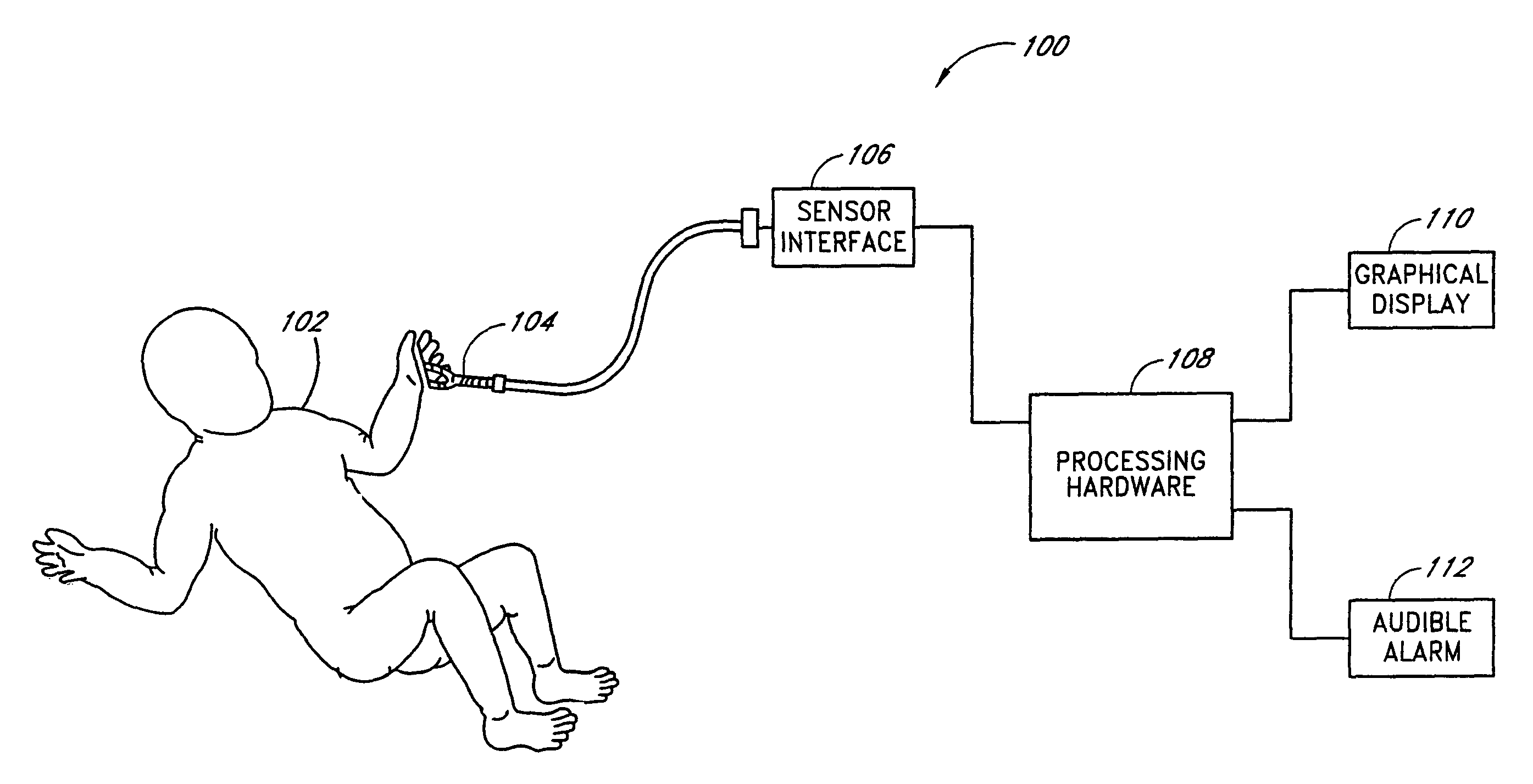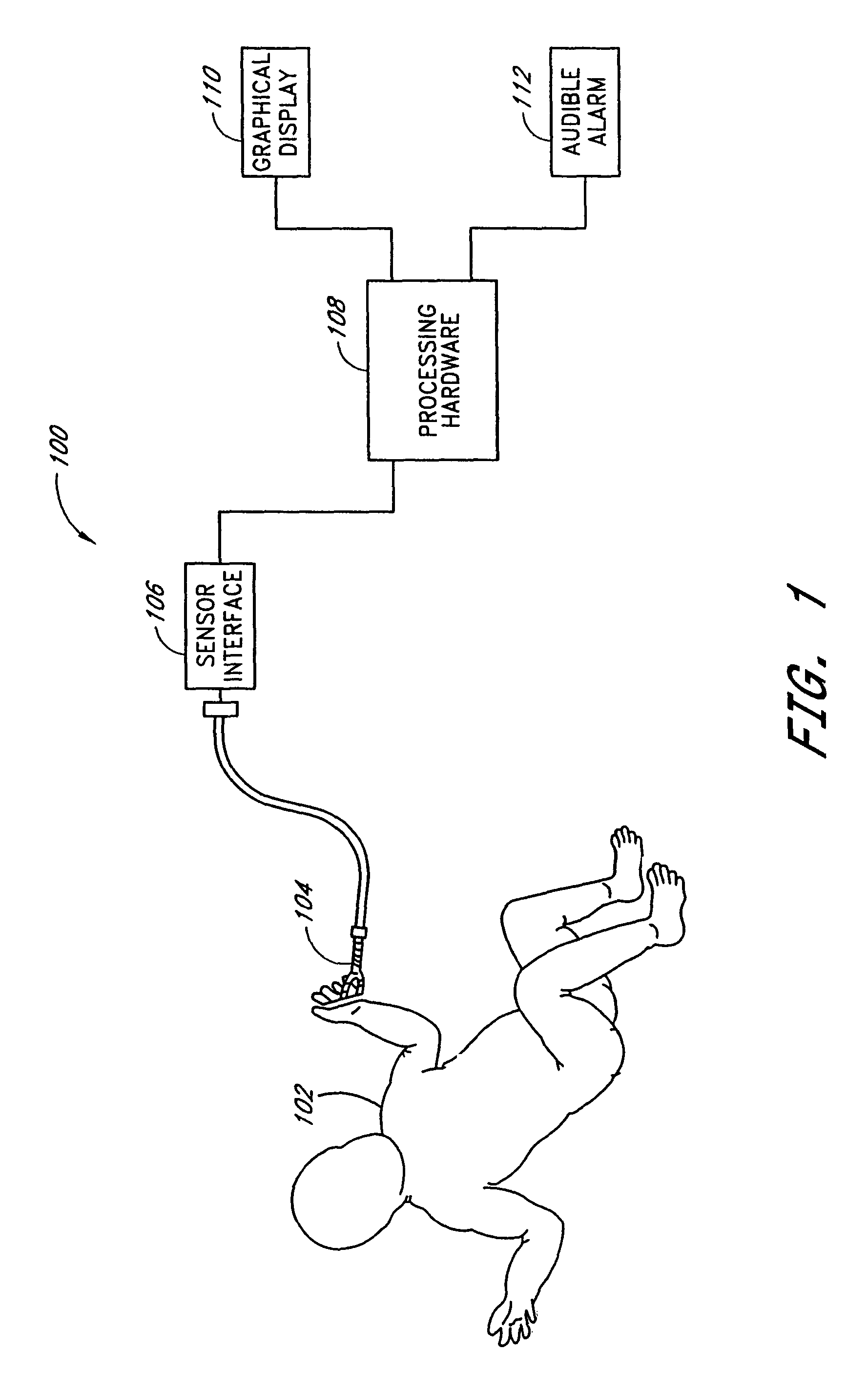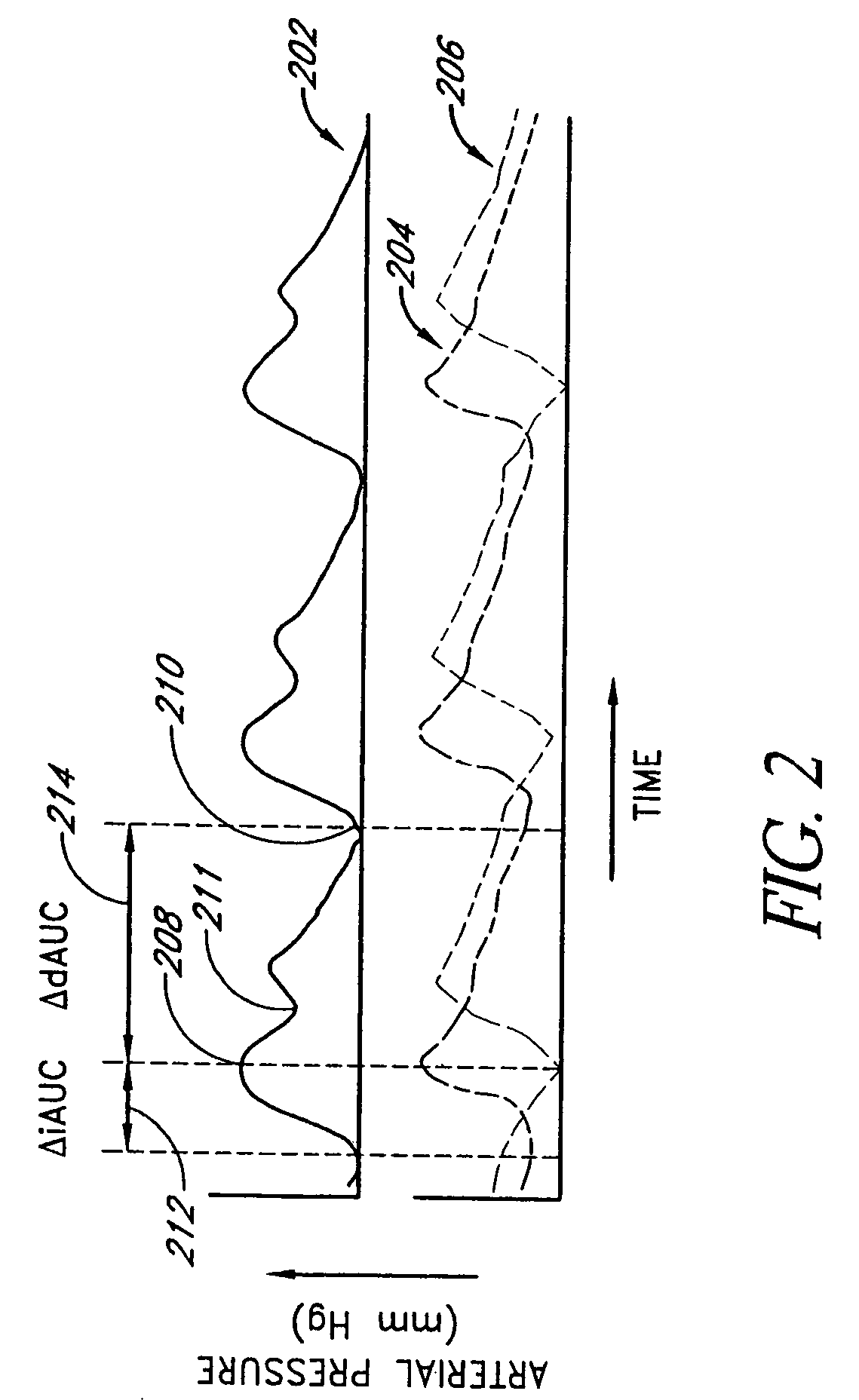Apnea detection system
a detection system and pulsus paradoxus technology, applied in the field of medical diagnosis, prognosis and monitoring, can solve the problems of unreliable as an indicator of asthma severity, invasive and painful arterial blood gas analysis, and heavy burden on the medical care system, and achieve the effect of accurately measuring pulsus paradoxus
- Summary
- Abstract
- Description
- Claims
- Application Information
AI Technical Summary
Benefits of technology
Problems solved by technology
Method used
Image
Examples
Embodiment Construction
[0037]Embodiments of the present invention will be more completely understood through the following detailed description, which should be read in conjunction with the attached drawings. In this description, like numbers refer to similar elements within various embodiments of the present invention.
[0038]Pulsus paradoxus represents a quantifiable, exaggerated decrease in arterial blood pressure during inspiration. Although frequently described in the medical literature as merely a decrease in systolic blood pressure, this physiologic phenomenon actually represents a decrease in left ventricular stroke volume (“LVSV”) during the inspiratory phase of the respiratory cycle and / or an augmentation of LVSV during the expiratory phase of the respiratory cycle. This subtle distinction is important in development of the most accurate means by which to measure pulsus paradoxus.
[0039]The mechanisms of pulsus paradoxus are incompletely understood and can differ among various diseases. In severe a...
PUM
 Login to View More
Login to View More Abstract
Description
Claims
Application Information
 Login to View More
Login to View More - R&D
- Intellectual Property
- Life Sciences
- Materials
- Tech Scout
- Unparalleled Data Quality
- Higher Quality Content
- 60% Fewer Hallucinations
Browse by: Latest US Patents, China's latest patents, Technical Efficacy Thesaurus, Application Domain, Technology Topic, Popular Technical Reports.
© 2025 PatSnap. All rights reserved.Legal|Privacy policy|Modern Slavery Act Transparency Statement|Sitemap|About US| Contact US: help@patsnap.com



